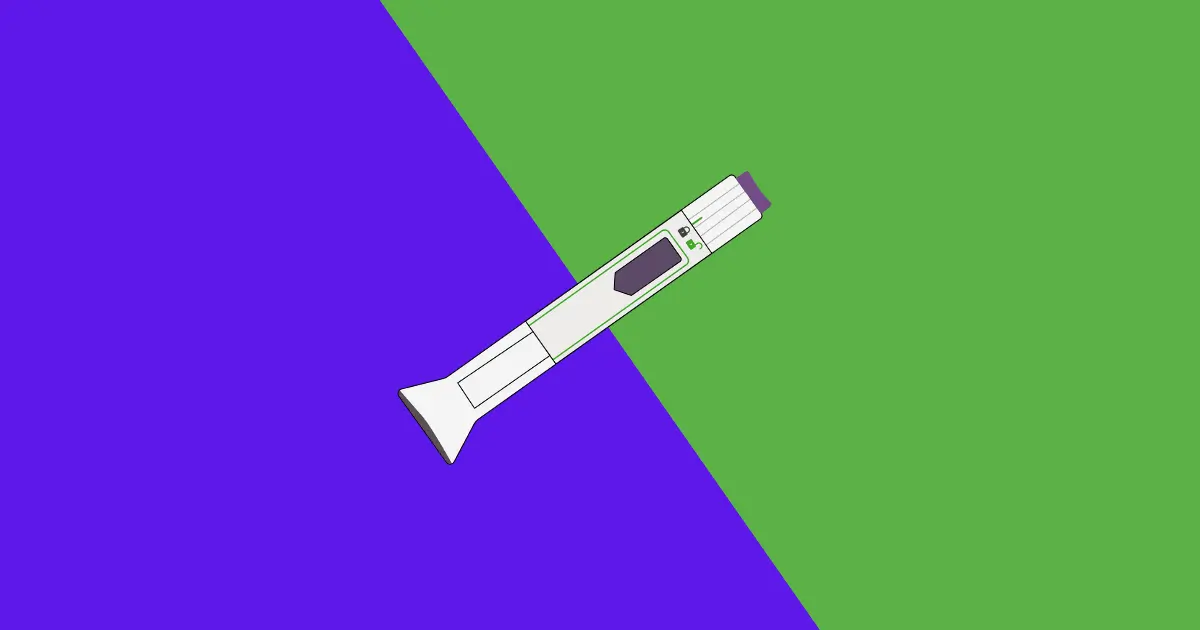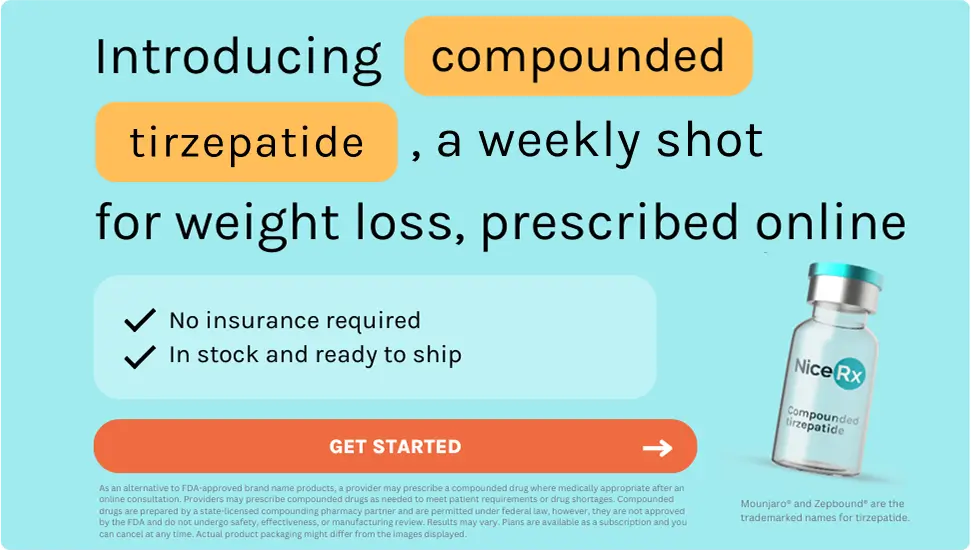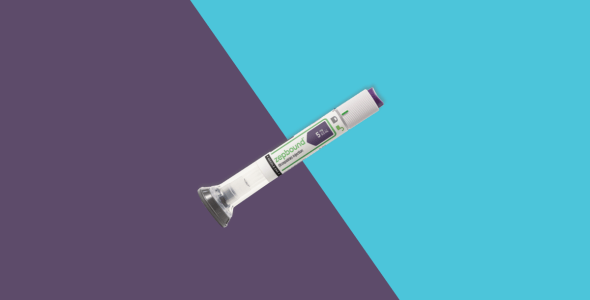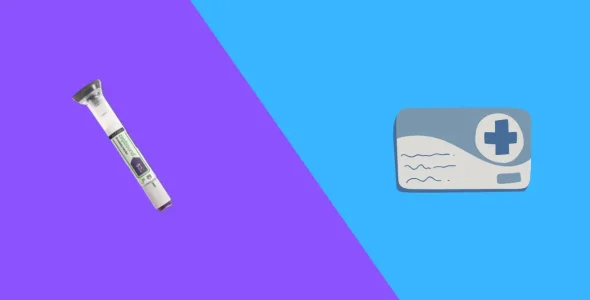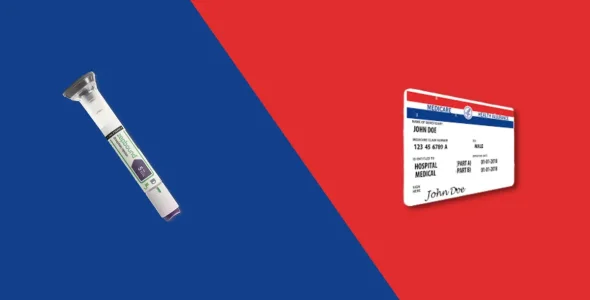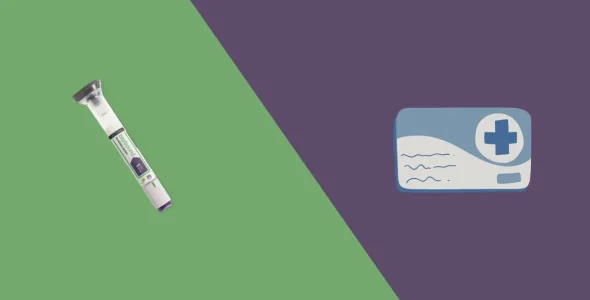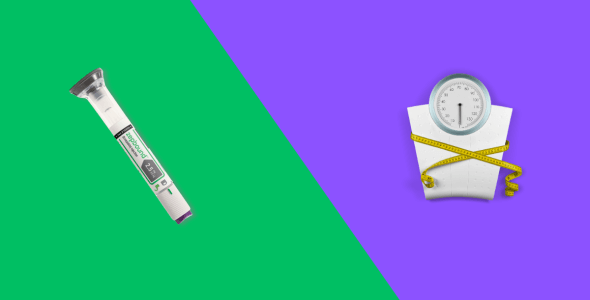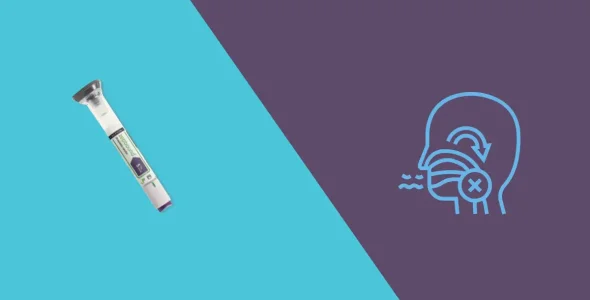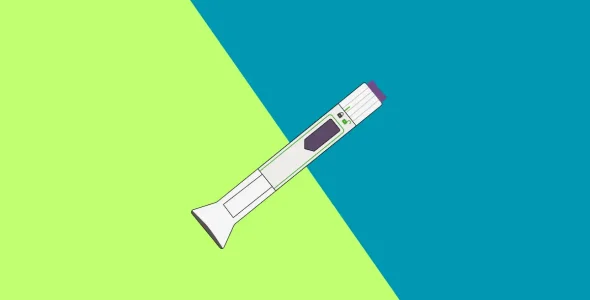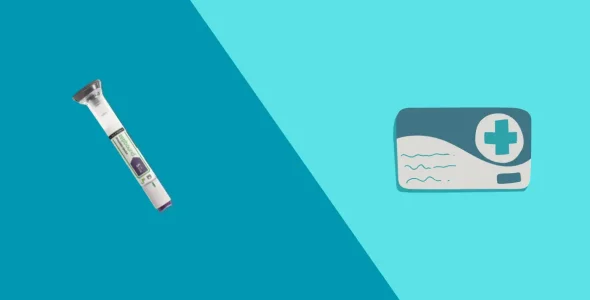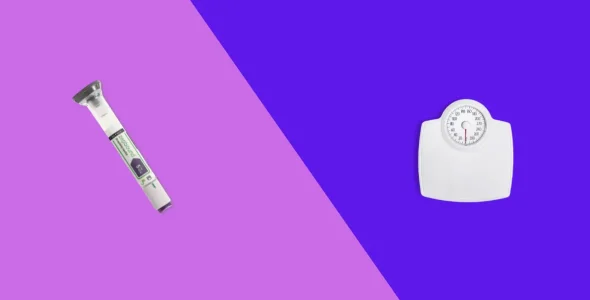What is Zepbound? A comprehensive guide
What exactly is Zepbound? We break down the science and benefits of this prescription medication.
Key highlights
- Zepbound is a once-weekly injectable drug FDA-approved for chronic weight management in obese and overweight individuals with at least one health-related condition like type 2 diabetes and high cholesterol and is also FDA-approved for obstructive sleep apnea (OSA).
- The active ingredient in Zepbound is tirzepatide, which is the only single-molecule GIP/GLP-1 dual-receptor agonist. It delays gastric emptying and promotes insulin secretion to manage blood glucose levels and reduce weight.
- Common side effects of Zepbound include gastrointestinal-related side effects like diarrhea, nausea, vomiting, constipation, and abdominal pain. Some patients also report side effects like pancreatitis, gallbladder disease, kidney problems, diabetic retinopathy, hypoglycemia, and hypersensitivity.
- Zepbound comes in the form of prefilled single-dose injections and vials. It is injected subcutaneously into your thigh, abdomen, or upper arm every week.
- You can save on Zepbound by applying for the Zepbound Savings Card or buying Zepbound vials from LillyCare’s Self Pay Journey Program.
Zepbound is FDA-approved for chronic weight management in people with obesity and overweight with at least one health-related condition. It was also recently FDA-approved for obstructive sleep apnea (OSA).
The active ingredient in Zepbound is tirzepatide, a GIP/ GLP-1 dual receptor agonist that acts on glucose-dependent insulinotropic polypeptide (GIP) and glucagon-like peptide 1 (GLP-1) receptors to manage blood glucose levels and contributes to weight loss by delaying gastric emptying.
Zepbound is more effective for weight management in obese individuals compared to semaglutide drugs like Wegovy and Ozemic. It is prescribed along with a reduced-calorie diet and increased physical exercise to promote weight loss.
The drug comes in the form of single-dose prefilled subcutaneous injections and vials. You can save on Zepbound with the Zepbound Savings Card when you have insurance that covers Zepbound. Alternatively, you can buy lower-cost Zepbound single-dose vials through the LillyCare Self Pay Journey Program.
This article is a comprehensive guide on Zepbound, including its benefits, potential risks, and contraindications, along with detailed instructions on using Zepbound subcutaneous pens and vials. Find out how you can maximize the benefits of the medication and save on Zepbound with or without insurance.
What is Zepbound?
Zepbound (tirzepatide) is a subcutaneous injection by Eli Lilly prescribed for chronic weight management in patients with obesity or overweight with at least one weight-related health condition, such as type 2 diabetes mellitus, high cholesterol, high blood pressure, and heart disease. The medication is prescribed for weight loss along with increased physical activity and a reduced-calorie diet. This weight loss drug may also be prescribed to treat moderate to severe obstructive sleep apnea (OSA) in adults with obesity.
Tirzepatide is the active ingredient in Zepbound. It is the only single molecule GIP/ GLP-1 dual agonist that activates the glucose-dependent insulinotropic polypeptide (GIP) and glucagon-like peptide-1 (GLP-1) receptors. Tirzepatide works by delaying gastric emptying which reduces appetite and promotes weight loss. It also signals insulin secretion and reduces glucagon release to regular blood sugar levels. Mounjaro, another tirzepatide drug by Eli Lilly, is approved by the FDA for type 2 diabetes management.
The U.S. Food and Drug Administration (FDA) approved Mounjaro (tirzepatide) on May 13, 2022, for the treatment of type 2 diabetes, and Zepbound (tirzepatide) was approved on November 8, 2023, for chronic weight management. FDA later approved Zepbound as the only drug for moderate-to-severe obstructive sleep apnea (OSA) in adults with obesity on December 20, 2024. Both medications are manufactured by the same company, Eli Lilly.
How does Zepbound work?
Zepbound works by activating GIP and GLP-1 receptors, offering dual action which results in more significant weight loss by delaying gastric emptying, decreasing glucagon secretion, and increasing insulin secretion in response to food. As a result, it helps regulate blood sugar levels and makes you feel fuller for a longer time, reducing your appetite and contributing to weight loss.
GIP and GLP-1 hormones are a part of the incretin system in the body that plays an important role in regulating blood sugar and hunger. It is also responsible for fat storage, making it critical in managing obesity and type 2 diabetes mellitus.
The dual receptor agonist action of Zepbound led to 20.2% average weight loss compared to 13.7% average weight loss in individuals (without type 2 diabetes) taking Wegovy (semaglutide). At the same time, adults taking Zepbound experienced 29 fewer breathing disruptions per hour compared to the placebo. Besides OSA symptoms, adults taking Zepbound lost 18% of their body weight in comparison to 2% weight loss in the placebo group.
Pharmacokinetics of Zepbound
Zepbound (tirzepatide) obtains a steady-state plasma concentration 4 weeks after once-weekly administration. The drug has a half-life of 5 days, allowing for a weekly subcutaneous dose. It stays in your system for 5-6 half-lives, requiring almost 30 days to eliminate from your body completely.
- Absorption: Tirzepatide has a bioavailability of approximately 80% across all sites of administration, including the abdomen, thigh, and the outer side of the upper arm. The median time to maximum plasma concentration of tirzepatide is 24 hours (between 8 and 72 hours to reach peak serum levels).
- Distribution: Tirzepatide has a mean-state volume of distribution of 10.3L.
- Metabolism: Zepbound and other tirzepatide drugs metabolize into individual amino acids in different tissues, including the liver. The drug is metabolized through proteolytic cleavage of the peptide backbone, beta-oxidation of the C20 fatty diacid, and amide hydrolysis.
- Elimination: Tirzepatide is primarily eliminated by metabolism. Kidneys eliminate water-solute tirzepatide metabolites through urine, and the rest of the drug is excreted through feces. Studies show that renal excretion is the principal route of tirzepatide elimination in humans.
Pharmacodynamics of Zepbound
Tirzepatide drugs like Zepbound activate the GIP and GLP-1 receptors in the body to promote weight loss and regulate blood sugar. It helps reduce body weight by decreasing calorie intake, stimulating insulin secretion, and increasing insulin sensitivity. Tirzepatide lowers excess weight with more fat loss than lean mass loss.
The GLP-1 activity of the drug delays gastric emptying that promotes feelings of fullness and reduced appetite. The delay in digestion is the largest after the first dose and the effect minimizes over time. It also suppresses glucagon and stimulates insulin secretion.
The GIP receptor agonist action signals insulin release in response to food and may improve satiety when used in combination with GLP-1. It also contributes to fat metabolism, resulting in faster weight loss.
Benefits of Zepbound
Zepbound’s double action on both GIP and GLP-1 receptors in the body has led to its popularity among individuals looking forward to lose weight quickly. The drug also offers other health benefits and has been seen to improve users’ quality of life.
Significant weight loss
The SURMOUNT-1 clinical trials showed significant weight loss among Zepound users in comparison with placebo. The 5 mg weekly dose of Zepbound (tirzepatide) led to 15.0% weight loss; the 10 mg weekly dose resulted in 19.5% weight loss, whereas participants taking 15mg per week lost 20.9% of the baseline weight, compared to 3.1% average weight loss with placebo. Results also showed that over 85% of participants lost at least 5% with 5 mg, followed by 89% of participants losing at least 5% with 10 mg, and 91% losing 5% of their body weight with the 15 mg weekly dose.
The SURMOUNT-4 trials showed an additional 9.7% weight loss over 36 weeks, leading to a total mean weight loss of 26% with Zepbound. Participants randomized to the placebo after 36 weeks of the study experienced a weight regain of 14.8%, indicating sustained weight loss among participants using Zepbound. Additionally, over half of adults taking Zepbound 10 mg and 15 mg lost over 20% of their body weight.
Improved metabolic health
In addition to weight loss, the FDA also approved Zepbound for obstructive sleep apnea (OSA) in obese individuals on December 20, 2024. A 52-week research studied the efficacy of Zepbound in the apnea-hypopnea index (AHI), analyzing how many times a person stops breathing (apnea) or breathes shallowly (hypopnea) per hour during sleep. Individuals taking Zepbound reported a significant reduction in hypopnea and apnea measured by AHI. Meanwhile, patients taking Zepbound for OSA also experienced a notable decrease in body weight compared to placebo.
Zepbound is not approved for cholesterol, yet it has been studied for these secondary endpoints in the SURMOUNT-1 trial. At 72 weeks, participants taking Zepbound showed a 24.8% decrease in triglycerides, compared to a 5.6% reduction in the placebo group. Individuals taking Zepbound showed a 5.8% decrease in LDL cholesterol and an 8.0% increase in HDL cholesterol, in comparison with a 1.7% and 0.7% decrease with the placebo.
Tirzepatide has been seen to improve other cardiovascular biomarkers, including systolic blood pressure, urine albumin-creatinine ratio, C-reactive protein levels, and glomerular filtration rate, reducing the risk of heart diseases and cardiac failure. A four-year follow-up of treatment with tirzepatide showed that it reduced the incidence of acute heart failure (acute HF), Major Adverse Cardiovascular Events (MACE), stroke, and Chronic Kidney Disease (CKD). Another research, funded by Eli Lilly, showed that treatment with tirzepatide lowered the risk of composite death from cardiovascular causes compared to placebo and improved health in patients with heart failure with preserved ejection fraction and obesity.
SURMOUNT-3 trials analyzed the impact of Zepbound on the mental and psychosocial function in adults with obesity or overweight. Results showed that tirzepatide improved general mental health and weight-related psychosocial function after intensive lifestyle intervention, including social functioning, vitality, and role-emotional elements, compared to placebo.
Mounjaro, another medication with the active ingredient tirzepatide made by Eli Lilly, has been approved by the FDA for type 2 diabetes, indicating the role of dual incretin mimetics in managing blood sugar levels. It improves insulin secretion and reduces glucagon release, helping maintain stable blood glucose levels.
Quality of life
Zepbound, along with adequate physical exercise and a reduced-calorie diet can help you lose significant weight in less time, boosting confidence and improving your quality of life significantly. Besides weight loss, it also helps you maintain blood sugar levels and improves cardiometabolic markers improving overall health for patients with health failure and obesity.
Anti-obesity medications (AOMs) like semaglutide, liraglutide, and tirzepatide have been studied on the risk of osteoarthritis among patients taking these drugs. Tirzepatide showed a significantly lower risk of osteoarthritis compared to semaglutide and liraglutide, making it an optimal choice. Tirzepatide’s role in obstructive sleep apnea has also proved to be revolutionary, especially in obese individuals, offering a better quality of life by improving sleep.
Potential side effects and risks
Drugs like Zepbound that act on the GLP-1 and GIP receptors in the body often have gastrointestinal-related side effects because of changes in digestion. Some users may also report serious side effects, impacting organs like kidneys, gallbladder, and pancreas. We’ve shared the common and serious side effects of Zepbound along with tips for managing these side effects.
Common side effects
Many patients taking Zepbound report gastrointestinal-related side effects when using Zepbound, including nausea, vomiting, diarrhea, constipation, abdominal pain, and indigestion. The frequency of these GI-related side effects along with other common side effects is as follows:
| Side effects | Zepbound 5 mg (%) | Zepbound 10 mg (%) | Zepbound 15 mg (%) |
|---|---|---|---|
| Nausea | 25 | 29 | 28 |
| Diarrhea | 19 | 21 | 23 |
| Vomiting | 8 | 11 | 13 |
| Constipation | 17 | 14 | 11 |
| Abdominal pain | 9 | 9 | 10 |
| Dyspepsia | 9 | 9 | 10 |
| Injection site reactions | 6 | 8 | 8 |
| Fatigue | 5 | 6 | 7 |
| Hypersensitivity reactions | 5 | 5 | 5 |
| Eructation | 4 | 5 | 5 |
| Hair loss | 5 | 4 | 5 |
| GERD (Gastroesophageal Reflux Disease) | 4 | 4 | 5 |
| Flatulence | 3 | 3 | 4 |
| Abdominal distension | 3 | 3 | 4 |
| Dizziness | 4 | 5 | 4 |
| Hypotension | 1 | 1 | 2 |
Rare but serious side effects and safety considerations
Other than stomach problems and adverse events like fatigue, injection site reactions, hypotension, and hair loss, users have reported some serious side effects of Zepbound, including:
- Kidney failure: Prolonged vomiting and diarrhea can cause fluid depletion and dehydration, leading to kidney problems that may require hemodialysis. If you experience long-term vomiting or diarrhea, drink plentiful water or over-the-counter rehydration solutions.
- Gallbladder problems: Fever, pain in your upper stomach, yellowing of skin or eyes (jaundice), or clay-colored stools when taking Zepbound can be signs of gallbladder issues, including cholecystitis.
- Pancreatitis (inflammation of the pancreas): Prolonged abdominal, with or without vomiting, may also indicate pancreatic issues. The pain typically radiates from the abdomen to your back. Stop the medication immediately and talk to your healthcare provider for the best treatment regimen.
- Serious allergic reactions: Hypersensitivity to the active ingredient (tirzepatide) or any inactive ingredient in Zepbound might give you severe allergic reactions. Stop the medication if you experience swelling of your face, lips, tongue, or throat, severe itching, problems swallowing and breathing, or dizziness, and call your doctor immediately.
- Hypoglycemia (low glucose levels): Taking Zepbound with other GLP-1 agonist drugs or insulin or insulin secretagogues, such as sulfonylurea, can cause hypoglycemia. Signs and symptoms of hypoglycemia include drowsiness, dizziness, sweating, light-headedness, shakiness, weakness, headache, confusion, blurred vision, slurred speech, irritability, anxiety, mood changes, weakness or feeling jittery.
- Retinopathy in patients with type 2 diabetes: Users have reported worsening of diabetic retinopathy on taking Zepbound. Inform your healthcare provider of changes in your vision during treatment with Zepbound to prevent further damage.
- Depression or thoughts of suicide: Anti-obesity medications, such as tirzepatide and semaglutide have been seen to induce changes in thoughts, feelings, and behavior. Patients with a history of suicide ideation and depression must be monitored for changes in behavior.
- Food or liquid entering the lungs during surgery requiring anesthesia: People taking Zepbound might face complications during preoperative protocol before a surgery requiring anesthesia. Delayed gastric emptying may increase the change of food or liquid entering your lungs during the procedure, even when you have fasted for the required period. Mention the use of Zepbound to your healthcare professional before the scheduled surgery.
- C-cell thyroid tumors: Zepbound comes with a boxed warning for C-cell thyroid tumors, seen in rodents during treatment with tirzepatide. The occurrence of thyroid cancer has not been reported in humans in relation to tirzepatide, but call your doctor immediately if you feel a lump in your neck, have difficulty swallowing or breathing, and experience swelling in your neck.
Managing side effects
Gastrointestinal side effects are the most common events reported on tirzepatide use. They typically resolve on their own after a few days or weeks, but you can try the following to manage them, especially nausea:
- Eat bland, low-fat foods, like rice and crackers
- Eat foods that contain water, like soups and gelatin
- Avoid sweet, fried, or greasy, or foods
- Take smaller meals and stop eating when you are full
- Eat slowly and avoid lying down immediately after having a meal
- Drink clear or ice-cold drinks
- Go for a walk after your meal
- Use OTC medication for nausea or chew on a piece of ginger
- Medication interactions
Patients taking oral hormonal contraceptives are suggested to switch to a non-oral birth control method or add a barrier method of contraception, 4 weeks after starting treatment and for 4 weeks after increasing the dose when using Zepbound. Patients taking oral medications with a narrow therapeutic index, such as warfarin, must be monitored during treatment with Zepbound. Insulin and insulin secretagogues, including Sulfonylurea, must be avoided when taking Zepbound to avoid hypoglycemia (low blood sugar levels).
Who can use Zepbound?
Zepbound is indicated for chronic weight management in individuals with:
- Body mass index (BMI) of 30 kg/m2 or greater, or;
- Body mass index (BMI) of 27 kg/m2 or greater, with at least one weight-related health condition, such as type 2 diabetes, hypertension, or high cholesterol.
This weight loss drug is also prescribed to treat moderate to severe obstructive sleep apnea (OSA) in adults with obesity.
It is not recommended to use Zepbound with other drugs containing tirzepatide or other GLP-1 receptor agonist medications. You should also avoid taking Zepbound if:
- You have Multiple Endocrine Neoplasia Syndrome type 2 (MEN 2)
- You or someone in your family had Medullary Thyroid Carcinoma (MTC)
- You are hypersensitive to tirzepatide or any inactive ingredient in the medicine
Zepbound is contraindicated in certain circumstances, making it necessary to consult your healthcare provider before starting the weight loss medication. Tell your provider all of your health conditions including gastroparesis to your healthcare provider to ensure the safety and efficacy of the drug. Your doctor will analyze your situation properly and advise you accordingly.
Some special groups of people with specific conditions may be suggested to stop Zepbound. The use of Zepbound in specific populations is as follows:
- Pregnant women: Healthcare providers advise discontinuing the medication as soon as the pregnancy is known. Weight loss is not recommended during pregnancy and there may be risks to the fetus from exposure to tirzepatide. In animal studies, exposure to tirzepatide resulted in fetal abnormalities and fetal growth reductions. Pregnant women who have been exposed to Zepbound are encouraged to contact Eli Lilly and Company at 1-800-LillyRx (1-800-545-5979).
- Lactation: There is no data on the presence of tirzepatide or its metabolites in animal or human milk or its effects on breastfed children. It is best to weigh the risks and benefits of the medication before taking it during lactation.
- Females of reproductive potential: Using Zepbound might reduce the efficacy of oral hormonal contraceptives because of its delayed gastric emptying action. The effect is most significant after the first dose. Women taking oral hormonal contraceptives are suggested to switch to a non-oral birth control method (eg. IUD) or add a barrier method for four weeks after each increased dose when starting treatment with Zepbound.
- Pediatric use: The safety and effectiveness of Zepbound have not been established in pediatric patients.
- Geriatric use: No differences in the effectiveness or safety of the drug have been observed in young or elderly patients (65 and above).
- Renal impairment: No dose adjustment is recommended for patients with renal impairment. Users taking GLP-1 receptor agonist drugs have reported acute kidney injury and worsening of chronic renal failure, leading to the need for hemodialysis. It is suggested to monitor renal function in patients with adverse events leading to dehydration.
- Hepatic impairment: No changes in the pharmacokinetics of Zepbound were observed in patients with hepatic impairment, eliminating the need for dose adjustment in Zepbound users with hepatic impairment.
How to use Zepbound
Zepbound is a GIP/ GLP-1 drug administered subcutaneously, through injections and vials. Both Zepbound dosage forms come in prefilled doses to ensure the patients get the accurate dose on each administration.
Dosage and administration
The prefilled single-dose pens come in six different doses, including 2.5 mg, 5 mg, 7.5 mg, 10 mg, 12.5 mg, and 15 mg. Zepbound is also available in vials of 2.5 mg/0.5 ml, 5 mg/0.5 ml, and 7.5 mg/0.5 ml, and 10 mg/0.5 ml.
- Recommended starting dose for weight loss: 2.5 mg once weekly
- Recommended maintenance dose for weight loss: 5 mg, 10 mg, or 15 mg once weekly
- Recommended maintenance dose for obstructive sleep apnea: 10 mg or 15 mg once weekly
Your doctor will most likely start Zepbound at 2.5 mg to minimize the side effects, increasing the dose every four weeks. The dose can be increased in 2.5 mg increments after four weeks to manage the gastrointestinal side effects. If the patient does not tolerate a specific maintenance dose, a lower maintenance dose can be considered.
Zepbound must be taken once weekly at any time of the day, with or without meals, along with a reduced-calorie diet and increased physical activity. It should be injected subcutaneously in the thigh, abdomen, or upper arm; rotating the site of injection helps prevent injection site reactions.
How to use Zepbound prefilled single-dose subcutaneous injections
Before you inject the medication, check the label to ensure you’re taking the right medication and the correct dose. Also, look for any signs of damage and use another pen if defective. Do not take the medication when the pen is expired, frozen, discolored, cloudy, or has visible particles.
Follow these steps when injecting using the Zepbound prefilled injection:
- Wash your hands before administering the injection.
- Remove and discard the gray cap; do not touch the base.
- Place the base of the pen against your skin and unlock it by rotating the lock ring.
- Press and hold the purple button for ten seconds to transfer all the contents of the injection into your body. You’ll hear two clicks; the first one indicates that the injection has started, whereas the other one signals the completion of the injection. Even if you do not feel a poke or hear two clicks, the injection is complete when the gray plunger is visible.
- Once injected, dispose of the used injection pen into an FDA-approved sharps container. In case you do not have a sharps disposal container, use a leak-proof, heavy-duty plastic container with a tight-fitting, puncture-resistant lid. Make sure to keep the disposal container away from the reach of children and pets.
How to use Zepbound vials
Before injecting Zepbound, check the single-dose vial label to ensure you have the right medication and dose. Make sure that the vial is not expired and has a colorless to slight yellow appearance with no visible particles. It should not be frozen or cloudy.
To inject Zepbound vials subcutaneously efficiently, you need:
- Single-dose Zepbound vial
- A syringe and needle
- Alcohol swab
- Gauze
- Sharps container for disposal
Once you have all the necessary supplies, wash your hands and select the injection site. You or someone else can administer Zepbound subcutaneously into your abdomen, thigh, or the back of your upper arm.
Following these steps when injecting using the Zepbound vial:
- Remove the plastic protective cap from the vial while keeping the rubber stopper intact.
- Wipe the rubber stopper with an alcohol swab.
- Remove the outer wrapping of the syringe and needle. Place the needle on top of the syringe and turn it until it attaches firmly. You can skip this step if the needle is already attached to the syringe. It is best to use a 1 ml syringe to properly measure the 0.5 ml dose.
- Take off the needle shield by pulling it.
- Hold the syringe firmly in one hand with the needle pointing up. Pull down the plunger with the other hand until the plunger tip reaches the line on the syringe showing that 0.5 ml of air has been pulled into the syringe.
- Insert the needle of the syringe through the vial’s rubber stopper and push the plunger all the way down. This transfers air into the vial, making it easier to take out the medication.
- Fill the syringe by turning the vial upside down. Pull the plunger past the 0.5 ml mark and tap the syringe (keeping it in the same position) to remove air bubbles.
- Push the plunger until the plunger tip reaches the 0.5 ml line and pull the syringe out of the vial
- When you have the right dose in the vial, insert the needle into your selected site of administration and push down on the plunger to inject Zepbound. Keep the injection in your skin for at least five seconds to ensure complete transfer of medication.
- Pull the needle out of your skin and dispose of it in a sharps container. Do not recap the needle to avoid the risk of needle stick injury.
- If you see blood at the site of injection after taking out the needle, press the area with an alcohol swab or piece of gauze. Do not rub the area.
It is suggested to rotate your site of injection every week to avoid injection site reactions. Always use a new syringe and needle for every dose to prevent infections and blocked needles. Do not share your syringe or needle with others to prevent the transfer of severe infections.
If you do not have an FDA-approved sharps container, use a spill-free, sturdy container made with heavy-duty plastic to dispose of the syringes and needles. Make sure that the container has a tight-fitting lid and is labeled properly. Keep the container away from the reach of children and animals to prevent potential hazards, such as infections.
In case you miss your weekly Zepbound dose, take it within four days (96 hours) of the missed dose. If more than four days have passed, skip the missed dose and take the next scheduled dose. Patients can change the day of administration, ensuring that two doses are at least 3 days (72 hours) apart before resuming the weekly dosing.
Storage
- Zepbound single-dose injection pens and vials must be stored in the refrigerator between 36°F and 46°F (2°C to 8°C).
- Zepbound can be stored at room temperatures below 86°F (30°C) for up to 21 days; discard them after 21 days of storing at room temperature even if the expiry date is away. Do not transfer the injection pens or vials to the refrigerator once stored at room temperature.
- Do not keep Zepbound injections or vials in the freezer. Do not use the medication if frozen.
- Store Zepbound in its original carton to protect it from sunlight and direct heat.
- If you drop the Zepbound pen, discard it and use a new one.
- Discard Zepbound injections and vials after each dose, even if the vials have some medication. Keep the disposal container away from the reach of children.
Adherence
To ensure that you get the best results from Zepbound by taking the treatment for the recommended period, you can:
Set an alarm
If you think that you might forget to take the medication weekly, it is best to set an alarm. You can set it up on your phone or instruct your voice assistant like Alexa to set up an alarm for a particular time on the same day every week.
Get a habit tracker
Buying a habit tracker journal can be a good idea to ensure that you take your medication every week. When taking Zepbound for weight loss, it also helps you stay on track with your low-calorie meals. You can add an ‘exercise’ section to the tracker to monitor your everyday physical activity.
Stay in touch with your healthcare provider
Your healthcare provider might ask you for updates on your progress with the medication. In case they do not, you can mention that you would like to share weekly or biweekly progress with them. It will encourage you to take the dose on time and engage in adequate physical workouts for the best results. Also, report any adverse events or unexpected side effects to your doctor immediately.
Keep a friend or family member in the loop
You can also ask a family member or friend to ask you for periodic updates about your Zepbound journey. Leave them daily or weekly updates, making it a ritual that pushes you to ensure you adhere to the medication and lifestyle changes.
Join online support groups
There are numerous online support groups for people with obesity, Obstructive Sleep Apnea (OSA), and people using Zepbound to manage these conditions. You can join one that seems most suitable for you and see what kind of exercise and diet is working the best for others. Seeing others achieve their weight-loss goals or share improvement in OSA will encourage you to take the weekly dose on time for the suggested treatment period.
How much does Zepbound cost with and without insurance?
The cost of Zepbound may vary for every individual, depending on their insurance plan. The list price of Zepbound is $1,086.37 for each fill, but those with commercial drug insurance for Zepbound may pay as low as $25 for a one-month, two-month or three-month supply of the medication if eligible for the Zepbound Saving Card. One month is defined as 28 days and 4 pens, and three months comprise 84 days and up to 12 pens for weekly dosing.
If your commercial insurance does not cover Zepbound, you can pay $349 (2.5 mg) or $499 (5 mg, 7.5 mg, or 10 mg) for a monthly supply of Zepbound vials through LillyDirect. With LillyDirect®, you can get single-dose vials and pens delivered to your home. Ask your doctor to send your prescription to LillyDirect® Self Pay Pharmacy Solutions.
If you’re unsure about your insurance company’s coverage of Zepbound, visit their website or call them to ask about it. The following questions can help you get a better picture of the coverage situation:
- Does my insurance plan cover Zepbound?
- If it covers Zepbound, how much does the insurance cover and how much will I pay for the medication out-of-pocket?
- Do I need prior authorization?
- What is my insurance plan’s deductible?
Your insurance company may require prior authorization to approve coverage for the medication. Without prior authorization, you may be responsible for the full cost of the medication. You can talk to your healthcare provider and ask them to submit the prior authorization and required documents (such as your treatment history) to your insurance company. Prior authorization typically takes 14 days for approval; you may be able to get it processed within 72 hours if urgent.
Once approved, keep a record of your prior authorizations for future reference. In case the request is denied, review the denial letter and ask your doctor to submit an appeal following the insurer’s appeal process. To appeal the denial, your provider will typically need to provide other supporting documents and write a letter of medical necessity for the medication to be approved. Make sure to submit the appeal before the deadline. You can also include other treatments or medications you have tried and supporting evidence to emphasize the need for the medication.
You can review the prior authorization checklist by Eli Lilly to help you navigate the process seamlessly.
How to save on Zepbound
Buying Zepbound at the retail price can be expensive for most, making it important to look for ways to get the medication at lower prices. Eli Lilly offers numerous programs to help patients, such as Zepbound Savings Card and Zepbound Self Pay Journey Program.
Zepbound Savings Card
Zepbound Savings Card allows you to get your monthly medication for as low as $25 for a 1-month, 2-month or 3-month prescription if you are commercially insured with coverage for Zepbound and eligible for the program.
The Zepbound Saving Card option is available for single-dose pens in 2.5 mg, 5 mg, 7.5 mg, 10 mg, 12.5 mg, and 15 mg doses. Patients with commercial insurance covering Zepbound can save up to $150 per one-month prescription, $300 per two-month prescription, or $450 per three-month prescription with the Savings Card Program.
If your insurance plan does not provide coverage for Zepbound, you can save up to $469 on your 1-month prescription fill of Zepbound. With the card, you can obtain savings of up to $469 per month and get separate maximum annual savings of up to $6,097 per calendar year.
Patients applying for the Zepbound Savings Card must meet the eligibility criteria and comply with the terms and conditions of Eli Lilly:
- You have a prescription from a healthcare professional for Zepbound for its approved use.
- Your commercial insurance plan covers Zepbound.
- You are not enrolled in any state, federal, or government-funded healthcare program, including Medicare, Medicare Advantage, Medicare Part D, Medicaid, Medigap, VA, DoD, TRICARE®/CHAMPUS, etc.
- You are 18 years of age or older
- You are a resident of the United States or Puerto Rico
Zepbound users need a valid patient HIPAA authorization to qualify for the Savings Card Program. Government beneficiaries are not eligible for Zepbound Savings Cards.
Zepbound is not currently listed in the Eli Lilly Patient Assistance Program.
Zepbound single-dose vials
You can also use the self-pay option through the Zepbound Self Pay Journey Program for single-dose Zepbound vials of 2.5 mg, 5 mg, 7.5 mg, and 10 mg. With Self-pay, you can get a one-month prescription of Zepbound 2.5 mg for $349 and Zepbound 5 mg, 7.5 mg and 10 mg for $499. No insurance is required.
The program is available through LillyDirect® Self Pay Pharmacy Solutions and requires you to refill the purchase of Zepbound vials within 45 days of the delivery of your previous Zepbound prescription.
Prescription discount cards
Prescription discount companies like GoodRx and SingleCare offer coupons for Zepbound that can be used at nationwide pharmacy retailers like CVS, Walgreens, Costco and others. You can save up to 25% on the cost of your medication when using these coupons without insurance.
Frequently asked questions
How long does it take for Zepbound to work?
It takes a few weeks to start losing weight when combined with lifestyle changes, including a low-calorie diet and adequate physical activity. Clinical trials have shown that individuals taking Zepbound lost 15% to 20.9% of their body weight on average over 72 weeks, when taking weekly doses as prescribed by the doctor.
Can Zepbound be used with other medications?
You may use Zepbound with other medications, depending on the drug. Always check with your doctor before taking other medications with Zepbound. Zepbound is contraindicated in patients taking another GLP-1 or tirzepatide drug. You must inform your doctor when taking insulin or insulin secretagogues before starting Zepbound to prevent the risk of hypoglycemia.
What should I do if I miss a dose?
If you miss a Zepbound dose, administer it within 4 days of the missed dose. In case more than 4 days have passed since the missed dose, skip it and take the next scheduled dose. You can change the day of weekly administration, ensuring that two doses are at least 3 days apart.
Are there any dietary restrictions while using Zepbound?
Users are suggested to take a reduced-calorie diet to maximize the benefits of the drug. Eating bland, low-fat meals and avoiding fried and sugary foods can also help manage nausea caused by Zepbound. Staying hydrated prevents constipation and dehydration because of vomiting and diarrhea.
Do I regain weight after stopping Zepbound?
Stopping treatment with Zepbound can lead to weight gain, especially when you stop following a healthy lifestyle. The SURMOUNT-4 Randomized Clinical Trial showed that Zepbound users lost 20.9% of their body weight on average after 36 weeks of taking the medication, and lost an additional 5.5% weight during the 52-week double-blind period. The group of individuals switched to placebo after 36 weeks had regained 14% of the total weight they had lost initially. You can minimize weight regain after tapering off the medication by taking nutritious meals, focused on whole foods and fiber. Avoid meals high in fats and carbohydrates. Make sure to continue regular workouts after stopping Zepbound to avoid gaining back all the weight you lost.
Tips for maximizing the benefits of Zepbound
Zepbound (tirzepatide) has proven superiority over Wegovy (semaglutide) for weight loss. You can maximize the benefits of Zepbound by maintaining a healthy lifestyle and adding light physical workouts to your daily routine. Here’s how you can get maximum benefits from Zepbound.
Healthy lifestyle choices
Healthy lifestyle choices, such as a low-calorie diet and regular exercise are pivotal to weight loss with Zepbound. Smaller meals packed with nutrients can help you feel fuller and prevent overeating. Most patients experience gastrointestinal side effects like nausea, vomiting, and diarrhea on starting Zepbound, making it important to stay hydrated.
Physical activity and exercise training have been seen to promote weight loss. Meta-analysis has also shown that exercise along with a low-calorie diet results in greater weight loss. Healthcare professionals suggest adding physical exercise, such as walking, running, and cycling to your diet to promote weight loss with Zepbound.
Monitoring progress
Monitoring your weight loss journey and improvement in OSA can help you better overview the progress over time. Share the changes in weight with your healthcare provider along with your diet and physical exercise to analyze your progress. Your doctor might also check for other health markers, such as cardiovascular disease, as patients using tirzepatide showed a lower CVD hazard than semaglutide users. Make sure to report severe adverse effects like hypoglycemia and hypersensitivity to your healthcare provider immediately.
Support systems
Having a strong support system, such as a supportive family, encouraging friends, concerned healthcare professionals, and fellow motivated Zepbound users can help boost Zepbound benefits. They encourage you to follow a healthy lifestyle and take your doses regularly to get the best out of the treatment. Look for other people in your circle taking Zepbound or find online communities of Zepbound users who share their progress to inspire others not to give up on their weight loss journey after just a few weeks.
Bottom line
Zepbound is a once-weekly injectable subcutaneous drug approved by the FDA for obstructive sleep apnea and chronic weight management in obese and overweight individuals with at least one health-related condition like type 2 diabetes, high cholesterol, or high blood pressure.
The active ingredient in Zepbound is tirzepatide. It is a dual-receptor agonist that works on the GIP/ GLP-1 receptors in the body to improve blood glucose levels and reduce appetite by delaying gastric emptying. Zepbound comes in prefilled single-dose vials of 2.5 mg, 5 mg, 7.5 mg, and 10 mg, and subcutaneous prefilled injections of 2.5 mg, 5 mg, 7.5 mg, 10 mg, 12.5 mg, and 15 mg. Zepbound is injected subcutaneously into your abdomen, thigh, or upper arm.
Gastrointestinal-related side effects are common when starting Zepbound or increasing the dose, and patients might also experience severe adverse events like kidney problems, pancreatitis, hypoglycemia, gallbladder disease, hypersensitivity, and depression.
Patients taking Zepbound can save on the medication through insurance coverage, Zepbound Savings Card, Zepbound Self Pay Journey Program, and prescription discount cards.
Always talk to your healthcare provider before starting the medication and inform them of prolonged or unusual side effects to prevent complications.
